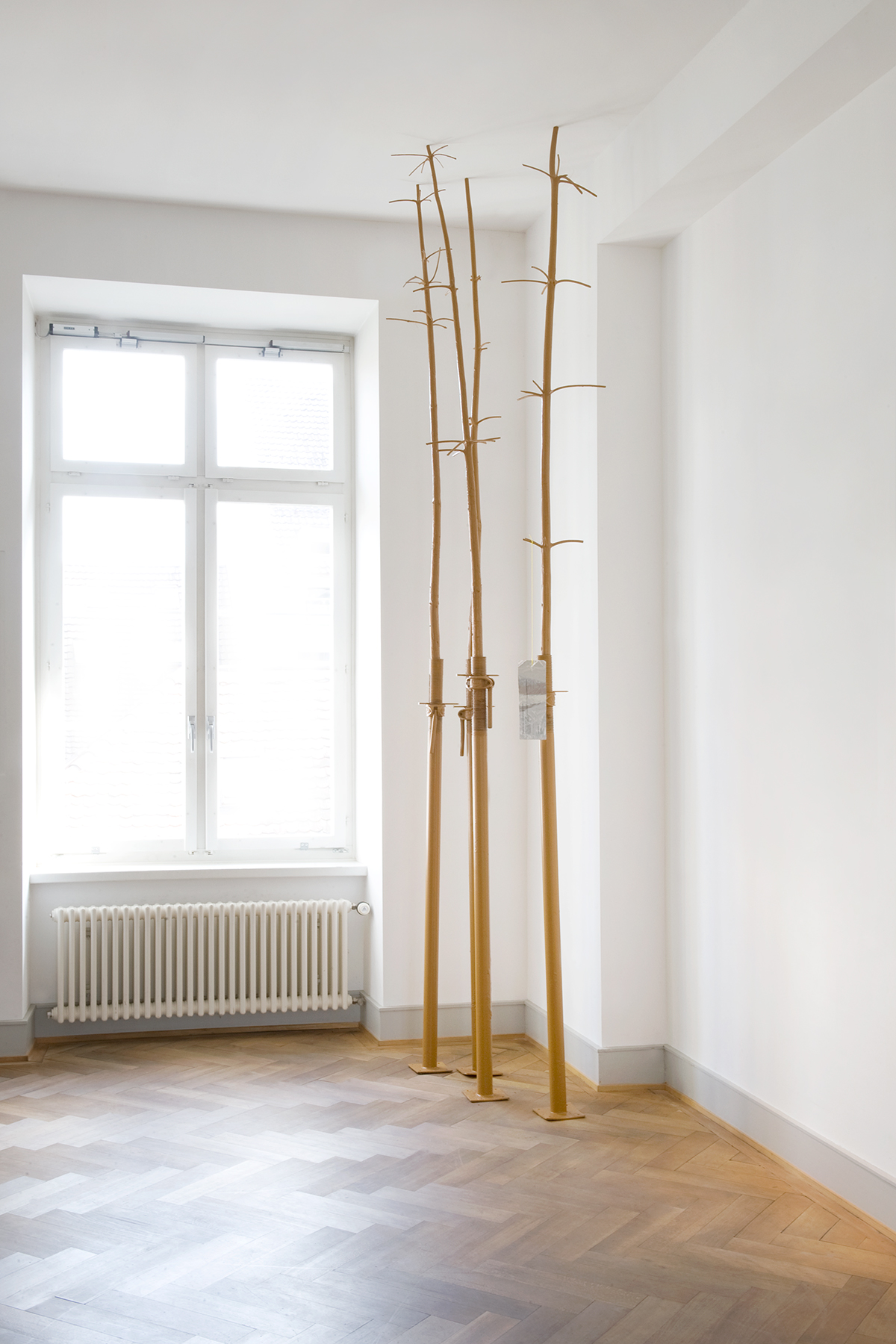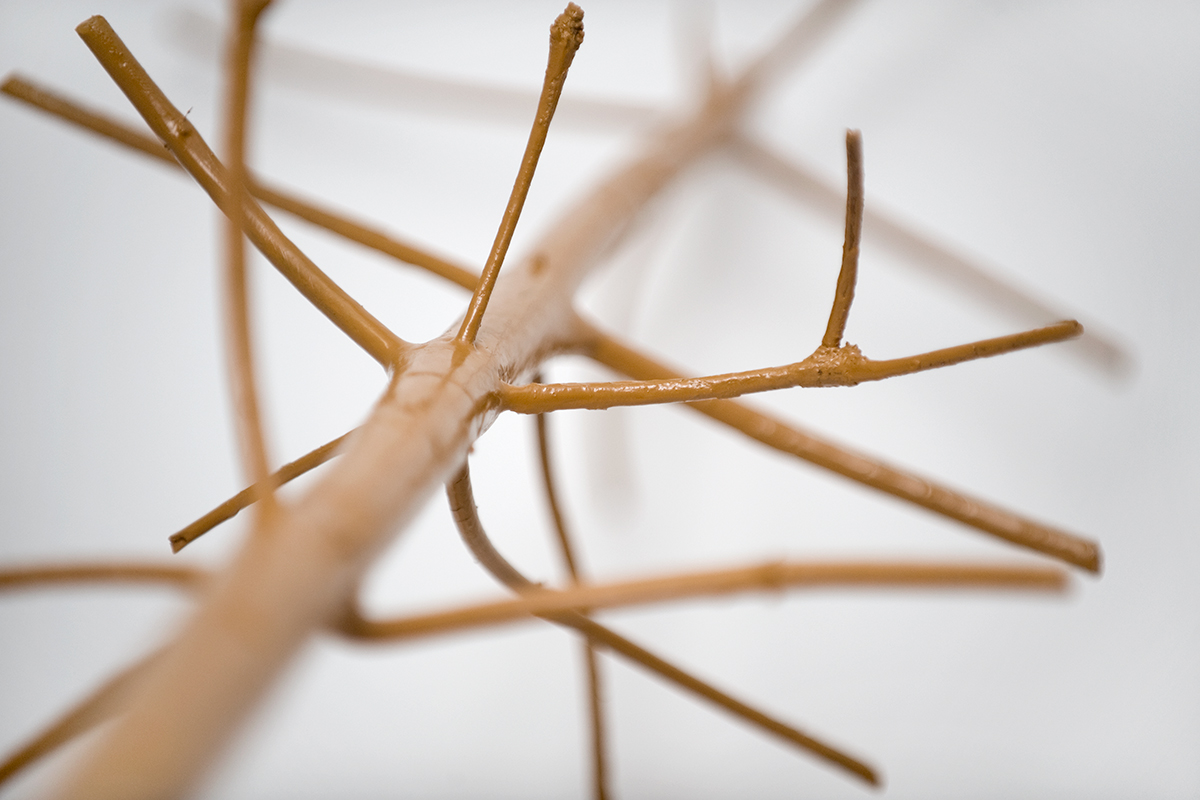
Nicht die Bohne II
Junge Fichten, Baustützen
2009 Winterthur
Photo Mirjam Graf
Die Arbeit ‚Nicht die Bohne‘ befasst sich mit der Fragmentierung des Landschaftsraums in Stadtregionen und deren Auswirkungen aufs Stadtideal. Die einst begrenzten Städte werden immer mehr zu Stadtlandschaften. Die Vorstellung des idealen Stadtbilds verblasst am Rand. Ein Fussballfeld, ein Areal mit Kleingärten, dann ein Wohnhaus aus gelbem Sichtbackstein. In der Mitte dann die Stadt selbst. Die Stadt in der alle Strassen gepflastert sind, kaum Autos fahren, die Häuser schmal, hübsch und aneinander gereiht sind. Am verblassten Rand ist unvorstellbar, was die Stadt sein soll.
‚Nicht die Bohne‘ zeigt Einzelstücke aus der Vorstadt in der historischen Mitte der europäischen Stadt. Dabei stellt sich die Frage, was mit dem idealen Stadtbild passieren wird, wenn das Wachstum des verblassenden Rands das Zentrum erreichen kann. ‚Nicht die Bohne‘ evoziert weder sentimentales Nachdenken über die Vergangenheit, noch freudiges Erwarten eines Metroplitanraumes. Sie wirft einen kühlen, hinnehmenden Blick auf ein fragmentiertes Stadtideal der Zukunft.
The work ‚Nicht die Bohne‘ addresses the fragmentation of landscape in metropolitan areas and its effect on the city ideal. The cities, once clearly bordered, are turning more and more into city landscapes. The conception of the city ideal is fading towards its borders. A football pitch, allotment gardens, a residential building with a yellow brick facade. In the centre the city per se. Where all streets are paved and hardly any cars are driving. Where the buildings are narrow, pretty and built side by side, row after row. On the borders, however, it is inconceivable what the city should be.
‚Nicht die Bohne‘ shows single pieces from the suburbs in the historical centre of the European city. This raises the question of what is going to happen to the picture of the city ideal when the growth of the fading borders will be reaching the centre. ‚Nicht die Bohne‘ is neither evoking sentimental thoughts nor joyful expectations of a metropolitan area. It is just taking a acquiescing look at the fragmented city ideal of the future.
